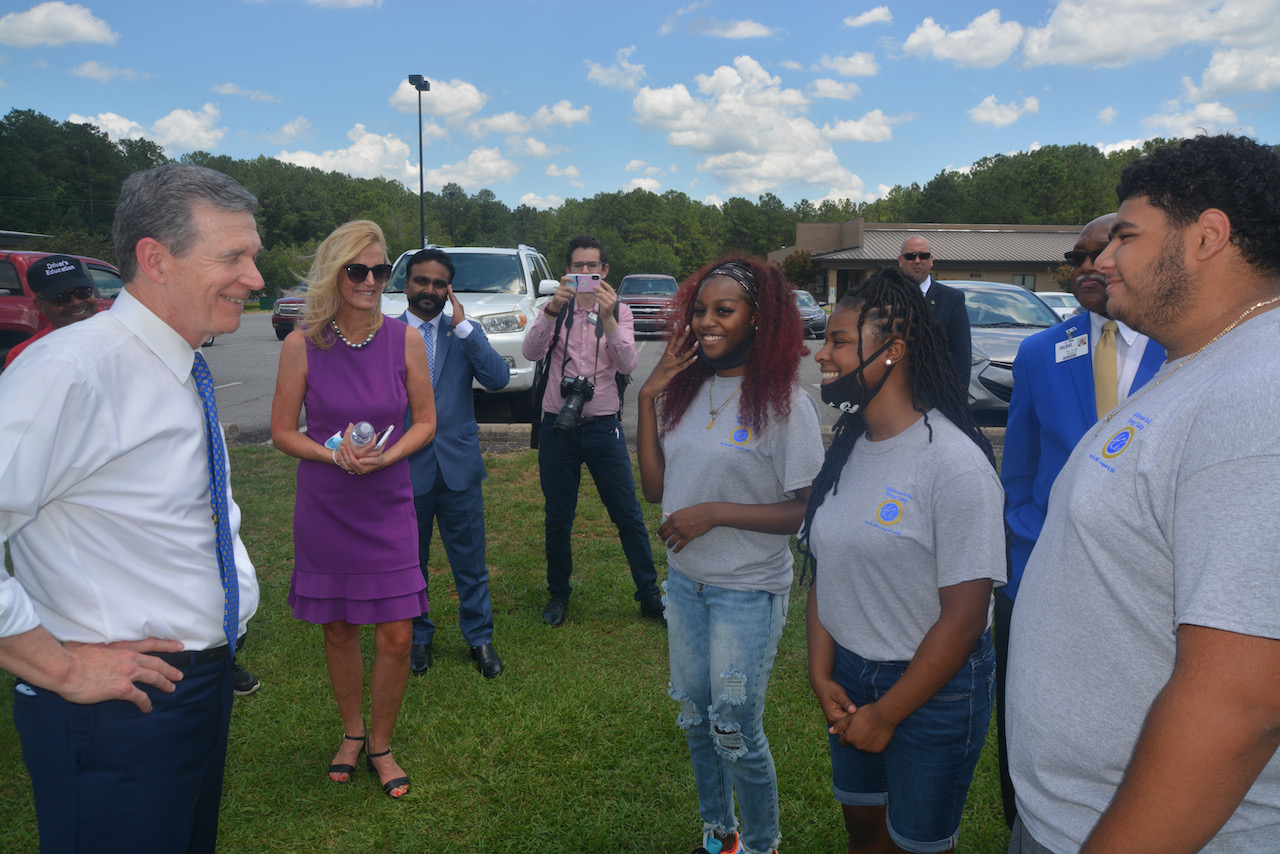After making an economic development announcement and signing a bill into law pushed by a Roanoke Rapids couple, Governor Roy Cooper visited with 20 high school students and instructors who are part of North Carolina’s first Clean Energy Youth Apprenticeship Pilot — the Halifax Lighthouse Solar Camp.
The governor’s office said as North Carolina moves to a clean energy economy, skilled workers are needed to fill jobs and help the industry grow. Work-based learning activities such as apprenticeships help create a sustainable pipeline of qualified workers and provide educational and economic opportunities for students.
“North Carolina’s transition to a clean energy economy creates good paying jobs, and we need skilled workers who are trained and ready,” Cooper said. “It’s uplifting to see high school students from a variety of backgrounds getting the knowledge and skills they need to work in the growing fields of solar and wind power.”
The Halifax County program began in May with 20 high school students training to work in solar and wind energy jobs.
Participating students complete 96 hours of classroom instruction at Halifax Community College.
Students who finish the program will receive a Solar Workforce Certificate along with three industry certifications: OSHA 10 — Construction, Lean Six Sigma Yellow Belt Level, and Working Smart.
North Carolina A&T State University is developing agreements so students in the program can receive credit toward a bachelor’s degree.
Students will also get 80 hours of work-based learning at the Center for Energy Education in Roanoke Rapids and with local employers, working on solar panels as well as wind turbines. The United States Department of Energy provided a grant that pays the students a stipend and covers the costs of equipment and supplies. NCA&T is providing additional curriculum and donations from members of the North Carolina Business Committee for Education are paying for all student transportation and lunches.
The Clean Energy Youth Apprenticeship was developed in partnership with the Office of the Governor, NCBCE, NC Energy Office, A&T, North Carolina Community Colleges, Halifax County Schools, Halifax Community College and the Center for Energy Education.
Strata Clean Energy will be the first employer partner of this new program and is working with ApprenticeshipNC to develop a youth apprenticeship and registered apprenticeship program in Solar Operations and Maintenance. This program can be used as a model for other counties and workforce sectors.
“The vision of this program is to provide our students with opportunities to be successful in the real world. This program is an example of what partnerships can do for students in rural places like Halifax County,” HCC President Michael Elam said.
Halifax County Schools Superintendent Eric Cunningham said, “Everyone wins when we focus on the needs of the whole child. Certification plus paid internship equals better opportunities for our students — that’s the winning formula.”
Cunningham said, “Halifax County Schools is so grateful for the funding which provided opportunities for our students to obtain valuable skills needed to be competitive in the global marketplace. As a result of this program, we have seen an increase in student engagement and family involvement which equals student success.”
Zaniya Battle, a student in the program, said, “Each day I am learning more and more about teamwork, workplace safety, solar energy, and problem-solving. This camp is providing such a rewarding experience for me as I continue to network with my peers.”
Said Battle: “The hands-on activities are very engaging and informative. I am learning more details about the three E’s of safety — Educate, Enforcement and Engineer.”
Penelope O’Neal, also a student, said, “This camp is like none other. Each week, we learn more skills to make us more marketable to potential employers. Our class discussed how we can make the work environment safer for everyone. We learned about risks and hazards and the difference between the two. A risk is the probability of something happening and a hazard is something that may happen.”






